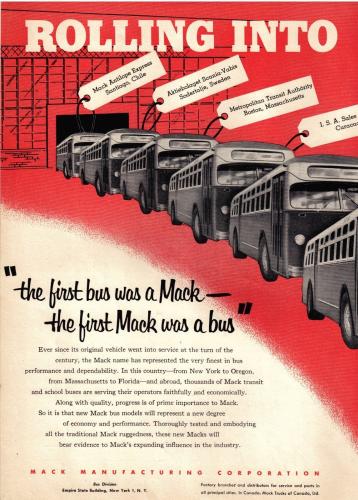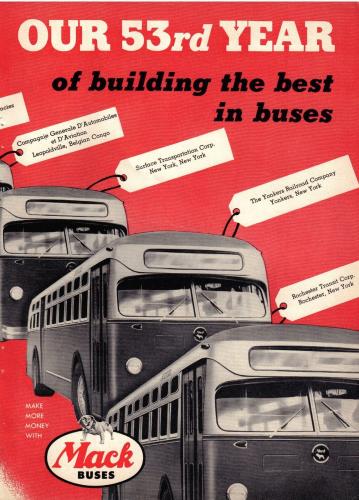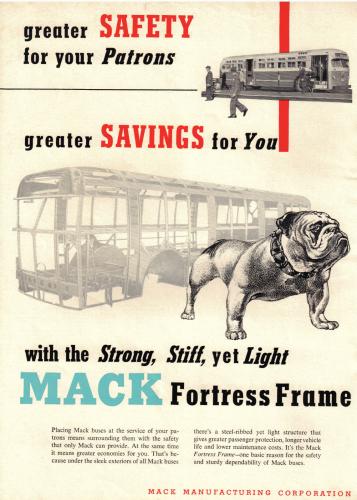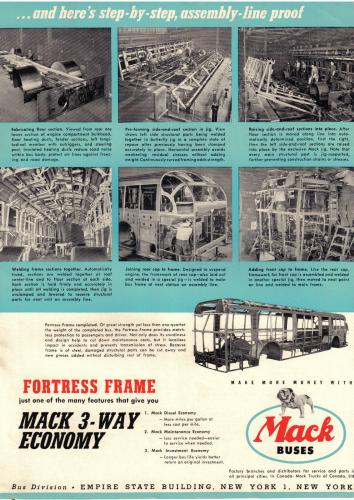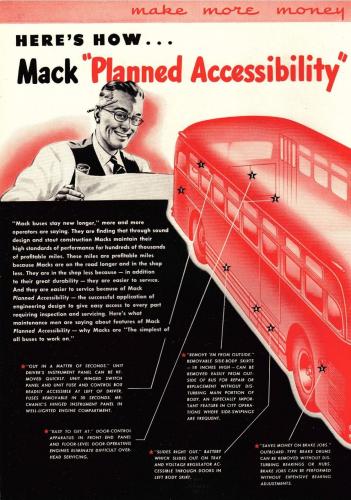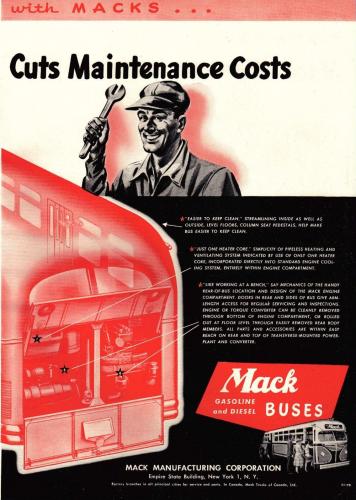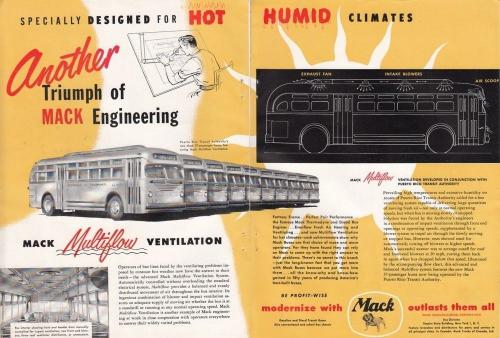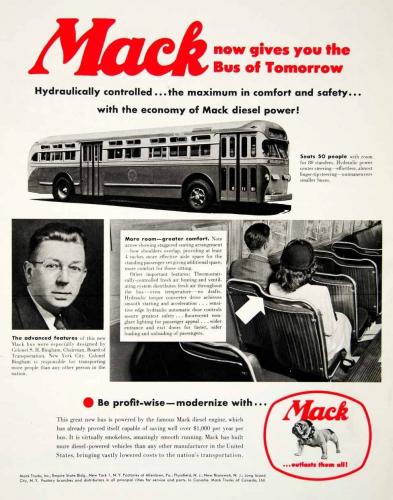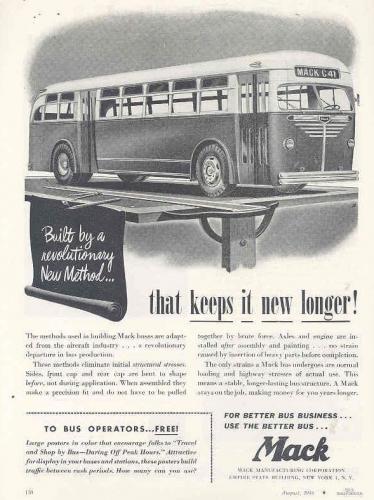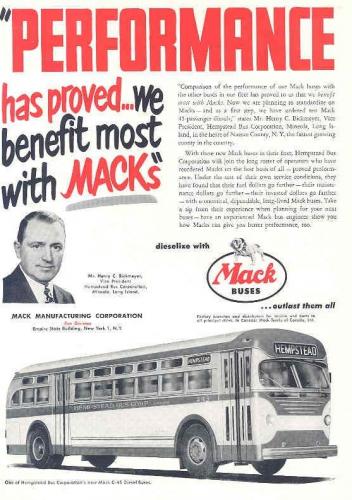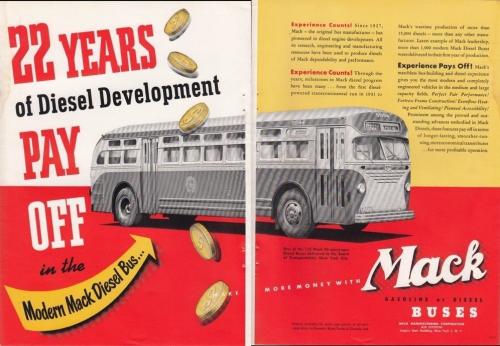
kscarbel2
Moderator-
Posts
18,909 -
Joined
-
Days Won
114
Content Type
Profiles
Forums
Gallery
Events
Blogs
BMT Wiki
Collections
Store
Everything posted by kscarbel2
-
Hillary blushes and becomes speechless when asked about her relationship with Putin (an embarrassing moment for Vladimir).
-
All the admired qualities of the former Mack Trucks are present at Scania. Scania's company culture, the immediately noticeable passion for being the best in trucks, is virtually identical to that of the former American Mack Trucks led by Zenon C.R. Hansen.
-
-
Oil price wallows below $29 The Financial Times / January 18, 2016 Resumption of crude slide follows lifting of sanctions on Iran Oil prices sank further below $28 early on Monday on fears the lifting of sanctions against Iran will push more supply on to a global market already grappling with overcapacity. The renewed fall in prices, which sank below $30 a barrel on Friday and hit US stocks, dovetails with Implementation Day when the economic benefits of life unyoked by many international sanctions start to flow to Iran. Those include the ending of embargoes by western powers on oil imports. The slide in oil prices pulled Asian equities lower, sending the Japanese stock market briefly into bear territory. Brent crude, the international oil benchmark, shed as much as 4.3 per cent in Asian trading to $27.70 a barrel, the lowest since November 2003. That followed a 6.7% slump on Friday in New York and a decline of 13.7% for the whole of last week. In the run-up to the start of European equities trading, Brent crude had recovered slightly but was still down 2% at $28.36, with Nymex WTI 1.9% softer at $28.86. It had fallen to $28.36, the lowest level since October 30, 2003. Concern about additional Iranian barrels come as prices are already depressed by a supply glut due to the development of shale oil in the US and Opec’s refusal to curtail production. Brent crude has now fallen 77.4% since closing at a record high $126.65 a barrel in April 2011. The drop was most precipitous in the second half of 2014 when prices went from above $100 to below $50 by January last year. On Monday, Barclays made what it called a “significant” reduction to its price forecasts the year. The bank now expects Brent and WTI to average $37 in 2016, down from $60 and $56 respectively. Kevin Norrish, an analyst, said: “The miserable start to the year for commodities markets has been exacerbated by heavy speculative selling on the basis of too much supply.” “New year woes are now being compounded by preliminary data suggesting demand is weakening sharply as well.” Barclays went on to warn that the “deflationary pressure” sparked by weakening oil prices could mean that the European Central Bank would take “further action” to loosen monetary policy, while a Bank of England move to tighten interest rates could be delayed into the fourth quarter of the year. Analysts at HSBC expressed scepticism that benefits typically associated with lower oil prices, particularly for oil-importing nations around Asia, will flow through this time. “Lower commodity prices, including oil, partly reflect weakening demand itself. In addition, the downturn in mining capex and the declining income of commodity producers is weighing on exports from Asia. So don’t expect the plunge in crude to lead to a swift bounce in Asian demand,” they said.
-
(HIno) Dakar Rally 2016 Kicks Off in Buenos Aires
kscarbel2 replied to kscarbel2's topic in Trucking News
Both of the Team’s Trucks Finish at Rosario. Team Wins Seventh Straight Championship in the Under 10-litre Class Hino Trucks Press Release / January 17, 2016 Car 2 finishes at 13th overall, showcasing the HINO500 Series truck’s outstanding capabilities. On January 16, the final stage of Dakar Rally 2016, teams competed on a 180km special between Villa Carlos Paz and Rosario and then traveled on a liaison before reaching the finish line in Rosario. The goal ceremony was carried out beside one of the city’s historic sites “Monumento a la Bandera.” HINO TEAM SUGAWARA, the only team that entered in the Trucks category from Japan, fielded two HINO500 Series trucks in the rally. The team’s Car 2 crewed by Teruhito Sugawara and Hiroyuki Sugiura finished at an accumulated ranking of 13th place in the overall Trucks category, and top in the Under 10-litre Class. Car 1 crewed by Yoshimasa Sugawara and Mitsugu Takahashi finished at 31st in the same, and 2nd in its class, crowning the team’s seventh straight championship in the class with a one-two finish. With Car 2 finishing at 13th overall in its category, the team has been able to prove once again the outstanding potential of the HINO 500 Series trucks. This day, contestants traveled on a 131km liaison from the Villa Carlos Paz near Cordoba which took them to the start line of an 180km SS in an intermountain area. The stage was primarily set on mountain roads and featured many twisty sections that were hardly accommodating of trucks. HINO TEAM SUGAWARA’s Car 2 was able to finish at 16th place and 1st in its class, but Car 1 was not so fortunate as it suffered lost time at the 110km point where a number of vehicles ahead of it became unable to move forward in a deeply rutted section of the road. Car 1 eventually finished the special at 40th overall and 3rd in its class before arriving at Rosario at the end of a 387km liaison. The goal podium was set up by the Monumento a la Bandera facing the Paraná River, the starting point of Dakar Rally 2014. Although the trucks arrived late in the afternoon, the crowd exploded into cheers as the HINO500 Series trucks and mechanics riding atop their roofs arrived by the podium. Crews firmly shook hands with Hino Motors chairman, Masakazu Ichikawa, who flew in from Japan, concluding the 13 stages of racing over 15 days in this year’s Dakar. Masakazu Ichikawa, Chairman, Hino Motors: I’d like to acknowledge the team for delivering a solid performance this year again. I get the feeling that Mr. Teruhito can climb even higher, but in any case, I’m very grateful to the entire team and for all the support that we’ve received. Twenty-five years of racing in the Dakar is quite a long history when you think about it, and I’m amazed at how Mr. Sugawara and his team have come together to achieve these results. Yoshimasa Sugawara: I’m happy to have finished in what ended up being a very challenging rally this year, and I’m also very happy to see so many people cheering us on at the goal. One of the memorable things for me this year was that, for the first time in a long while, we got bogged down and stuck. I’ll continue to race on. I’d like to thank everyone who has supported us. Mitsugu Takahashi: The road was deeply rutted at the 110km point in today’s SS, keeping us from getting through. There was a line of vehicles that couldn’t move forward and we lost about an hour and 20 minutes. Fortunately, we managed to finish the special thanks to locals who guided us to an alternate route. This was the first Dakar for me and the fact that it’s all over hasn’t sunk in yet. I feel like we’re going to be racing again tomorrow. Teruhito Sugawara: This was the 25th anniversary of Hino Motors’ first entry in the Dakar Rally, so I took that to heart as we raced. The truck upgrades that we made have had a definite impact and I feel that we’ve got our rivals by their tails now. We know what we need to do next, so I think this was a great race also in terms of development going forward. Hiroyuki Sugiura: The course today was made up of twisty piste in the mountains, with almost no high-speed segments. There were areas that were slippery from the rain, and we did have one spin out. We wanted to finish in the top ten this year but regrettably we were a few positions short. That said, we’ve proven that we’re capable of fighting close battles with the top contenders so we have a lot to look forward to. Seiichi Suzuki: Our times in the specials are generally getting better, and this was confirmation of the trucks’ improved performance. Repairs for some minor weld cracks were about the only repairs that we needed to do on our suspensions and supporting members, so I’m happy about that. Masaki Tagoku: Time just flew by and I had a lot of fun. It was tough when things got so hectic that we didn’t even have time to sleep, but I’m very happy that I was able to work with this group of people. I’m very grateful that we were able to bring both HINO500 Series trucks to the finish line. Masato Kondo: What I learned is that anything can happen in Dakar. It was critical for us to deal with them one by one as they arose. In the past, I had been servicing trucks for myself. In the Dakar Rally, I experienced servicing the vehicle for the driver, and I think that has helped me grow in many ways. Nozomi Tonoike: A lot of things are going through my mind as I see the goal podium today and realize that it is all over. It was tough but it was well worth it. I really wanted to experience the Dakar Rally first-hand, so I’m very grateful for having been given this opportunity. Hideyuki Sakaguchi: It was a long two weeks, but it also feels like it just went by in a blink of an eye. Things got really tough at times, but we worked together as a team to overcome any problems. Seeing the goal podium today, I’m just left speechless. Photo gallery - http://www.hino-global.com/dakar/latest_news/PD16-25.html -
(HIno) Dakar Rally 2016 Kicks Off in Buenos Aires
kscarbel2 replied to kscarbel2's topic in Trucking News
Car 2 Climbs to 13th in Accumulated Rankings Overall Hino Trucks Press Release / January 16, 2016 Both trucks return safely to their last bivouac in Villa Carlos Paz. With only two more days to go in Dakar Rally 2016, the trucks raced on a 267km SS en route from San Juan to their last bivouac in Villa Carlos Paz. The SS was set in the intermountain areas on the outskirts of Cordoba and consisted primarily of twisty mountain roads. Many parts of the course were narrow, and whereas the SS for motorbikes and cars was 481km long, the course for trucks branched off midway making for a shorter course that finished at 267km. Nonetheless, the liaison leading to the start of the SS was 414km long, and adds to that the 185km liaison that came after the SS, the total distance of 866km was the longest traveled by the trucks in a single day in this year's rally. During the second half of the rally, Car 2 has consistently delivered outstanding performance in the specials clocking at 9th, 14th, and 13th overall, proving that it was a force to reckon with even among its rivals with larger engine displacements. Leveraging its speed in what was a very challenging stage this day, the Teruhito Sugawara and Hiroyuki Sugiura crew pushed HINO TEAM SUGAWARA's Car 2 aggressively, finishing the SS at 20th in the overall trucks category and top in the Under 10-litre Class. This brings Car 2 to 13th place in accumulated rankings overall and top in its class. Meanwhile, veteran driver Yoshimasa Sugawara and the younger Mitsugu Takahashi who piloted Car 1 delivered another solid day of racing, finishing at 35th overall and 3rd in the class. This brings Car 1's accumulated rankings to 30th place overall and 2nd in its class. The bivouac at Villa Carlos Paz was set on the same camping grounds where the teams camped on January 3. Tomorrow, contestants will be racing on a 180km SS―the last special of this year's the rally―before they reach the finish line in Rosario. Fully aware that nothing can be taken for granted in the Dakar, Hino team mechanics paid extra attention in servicing their trucks for the last time in this rally. Yoshimasa Sugawara: We were prepared for a long day, but our trip to Villa Carlos Paz went smoother than we had thought. Actually, the hardest parts for us were the intense traffic jams in the urban areas of the last liaison. We will drive carefully again tomorrow to make sure that we finish. Mitsugu Takahashi: As we were down to two more days, I was extra careful to avoid any accidents or problems with the truck that might flush the results we have racked up so far down the drain. I know I will be nervous tomorrow as we head for the finish line, so I will give it my best. Teruhito Sugawara: The dust just wouldn't settle on the mountain roads and that affected our visibility. The roads were narrow and, contrary to expectations, it was not a high-speed course. Nonetheless, we feel good because we were able to race neck and neck with our larger rivals. Hiroyuki Sugiura: Navigation was not so difficult per se, but there were many areas that had speed restrictions as we passed through small towns, so I had to be extra vigilant. One concern for tomorrow's SS is that organizers have made a lot of course modifications because of the rain. Photo gallery - http://www.hino-global.com/dakar/latest_news/PD16-24.html -
(HIno) Dakar Rally 2016 Kicks Off in Buenos Aires
kscarbel2 replied to kscarbel2's topic in Trucking News
Under Intense Heat, Car 2 Finishes a Rough Stage at 13th Place Hino Trucks Press Release / January 15, 2016 Car 1 finishes at 33rd. Team maintains its one-two lead in the class. Dakar Rally 2016 is now in its final stages, with three more days to go until the last day of competition on January 16. On January 14, contestants raced on a 431km SS between La Rioja and San Juan, Argentina, and battled under intense heat in a stage mixed with dried riverbeds, sandy terrain, fesh-fesh, as well as barren terrain whose surface was as hard as it was uneven. The average speed for the entire course was on the low end, and a number of vehicles were seen overheated or stuck in fesh-fesh along the way. After letting the world take notice of HINO500 Series truck’s intrinsic potential by climbing as high as 4th in time in the overall Trucks category at one point in the Fiambala stage the previous day―the highlight of this year’s Dakar Rally―the Teruhito Sugawara and Hiroyuki Sugiura crew piloting HINO TEAM SUGAWARA’s Car 2 remained aggressive in today’s stage as well. Although the temperature soared to above 40ºC, they had no problems with their coolant temperature. Neither did they have any flats or get bogged down, finishing the SS at 13th place and top in the Under 10-litre Class. In a solid display of their tenacious driving, the Yoshimasa Sugawara and Mitsugu Takahashi crew of Car 1 finished the special at 33rd overall and 2nd in the class. Based on these results, Car 2 finds itself in 14th place, and Car 1 in 31st in the overall Trucks category. The two trucks continue to maintain their dominance in the Under 10-litre Class, with a one-two lead in the class. The bivouac at San Juan, situated in central Argentina at the foothills of the Andes Mountains, was set up on a racing circuit (Autódromo El Zonda) located in a rocky mountain area in the outskirts of the town. The intense sunlight coupled with heat radiating from the ground and rock surfaces heated the daytime air to over 43ºC, making this the most tortuous bivouac in this rally. Even after sundown, the temperature refused to decline, what with all the heat held in the asphalt. Nonetheless, this intense heat was no deterrent to Hino team mechanics who went about their inspections and servicing tasks. The itinerary for tomorrow, January 15, includes a 481km SS en route to Villa Carlos Paz, which will essentially be the last timed segment for this year’s rally. Yoshimasa Sugawara: Today, we had long stretches of fesh-fesh and rough roads. Although the truck was subjected to intense vertical motions, this truck is much more comfortable to drive than our previous ones. Two more days to go. We will stay focused and give it our best. Mitsugu Takahashi: The roads were just brutal today. I was wondering when it would start to ease up all the way to the finish line. Navigation was quite tricky towards the end, so I’m glad that we were able to make it home before sundown. Teruhito Sugawara: I pushed quite hard today to gauge how we would compare against our larger rivals. It was a tough day in that the course required a lot of attention, but we were able to make it without falling back noticeably from the larger trucks ahead of us. That’s another confirmation that we are on the right track in terms of truck development. Hiroyuki Sugiura: There were many large gaps along the way where you could see signs of recent water flows. At the very the end, the course had us cross the same river three or four times. I think navigation was the most difficult towards the end because of the gravel covering that obscured the road surface. Photo gallery - http://www.hino-global.com/dakar/latest_news/PD16-23.html -
(HIno) Dakar Rally 2016 Kicks Off in Buenos Aires
kscarbel2 replied to kscarbel2's topic in Trucking News
Car 2 Climbs to 14th Overall for the SS, Despite Being Stuck in the Latter Half of the Stage Hino Trucks Press Release / January 14, 2016 Both HINO 500 Series trucks do well in Fiambala, the most challenging stage of the rally. January 13: The day’s itinerary took teams from Belén to La Rioja, Argentina, with a special in the Fiambala Desert, which is considered by many to be the most challenging segment of this year’s rally. Fiambala is a basin at the foothills of the Andes, and is known for its heat, as well as its soft, white dunes, and fesh-fesh. This is area, considered to be one of the most challenging stages of the rally, has been featured in numerous Dakar Rallies since it relocated to South America. Due to the cancelation of the start and major route changes made to the first half of the rally this year, this day’s stage was to be the only full-fledge desert stage, and fittingly attracted a great deal of attention. The start time was delayed due to heavy thundershowers that beset the area early in the morning. This forced organizers to cancel the group start that was planned for all vehicles in top standings in their respective categories, and also to shorten the SS from the original 278km to 244.7km, with the finish line set at CP (checkpoint) 5. Car 2 crewed by Teruhito Sugawara and Hiroyuki Sugiura, which made it into the top 10 in the previous day’s SS, put in a solid performance this day. Starting 9th out of the start line, they advanced their position to 6th by the time they reached the neutral zone, and up to 4th place at CP 4. However, the truck got stuck towards the end of the dunes and lost about an hour of time. They finished 14th overall and top in the Under 10-litre Class. Meanwhile, Car 1 crewed by Yoshimasa Sugawara and Mitsugu Takahashi was 31st out of the gate, and steadily improved its position thanks to the solid driving delivered by its veteran driver. Car 1 finished 25th overall and 2nd in the class. Based on these results, Car 2 now climbs to 14th place, and Car 1 to 28th place in the overall Trucks category. The two trucks continue to maintain their one-two lead in the Under 10-litre Class. The bivouac at La Rioja was set up on a racing circuit (Autodromo La Rioja) that was also used in a number of previous Dakar Rally events. In their bivouac that was set up in the circuit’s run-off area, Hino team mechanics were seen performing inspection and servicing work on the two HINO500 Series trucks until early in the morning. Tomorrow, January 14, teams will travel southward from La Rioja to San Juan where they will race on a 431km SS set up on rough intermountain roads. Yoshimasa Sugawara: It was a tough day as the sand was soft. We got stuck for about 30 minutes early in the stage, but other than that, we had no problems. Our left-front tire sprang a slow-leaking puncture towards the end, but we compensated for that using the air pressure adjuster to reach the finish line. It was a long day. Mitsugu Takahashi: This was the first full-fledge dune stage for me, so I was even more tense than yesterday. I was amazed at some of the places that this truck could climb, and it was a tough day for me as navigation was also quite busy. Teruhito Sugawara: The sand was deep in many areas, making this a very difficult stage. Our right-front tire sprang a slow-leaking puncture in the first half of the race so we had to compensate for that using the air pressure adjuster to keep going. We were able to replace the tire on the 15-minute neutral zone between the specials so we didn’t lose any time. When we got stuck towards the end, we were able to get out thanks to a Tatra that pulled us out. The SS was such that experience more than truck performance became the deciding factor of how high you could go. I sensed the course designers’ intent in that. Hiroyuki Sugiura: It was a tough course. We saw top contenders in the Trucks category stopped along the way, so it was exciting to get a real sense that we were in a competition. This was the first time we made the fourth fastest time in a segment, so that was a confidence booster for me. Masaki Tagoku: I haven’t slept much, but I’m feeling pretty well physically. Besides, time flies when I’m working on the trucks. I feel a great sense of purpose because Car 1 has been performing without any incidents. I feel really relieved when it comes back to the bivouac. Masato Kondo: I’m starting to feel some tiredness building up, but I perk up when I hear how well the HINO500 Series trucks are doing. I think everyone else is tired too so I intend to stay alert and make no mistakes until we reach the finish line. Nozomi Tonoike: It’s sad to think that I’ve only got three more days of working with this group of people. We’ve focused on performing safe and error-free work, and on maintaining verbal contact with each other during tough times, including when we had to stay up the whole night for days in a row. I’m grateful for being given this experience of working together to achieve one shared goal. Hideyuki Sakaguchi: We’ve been working hard to ensure that the HINO500 Series trucks are able to return to the bivouac everyday, and we’ve come to a point where there’s only a couple of more days to the finish line. It all just went by in a blink of an eye. The toughest time for me was working under the torrential rain in Jujuy on the fourth day of the rally. Nothing has come close to perturbing me after that. Photo gallery - http://www.hino-global.com/dakar/latest_news/PD16-22.html -
Commercial Motor TV - sponsored by DAF Trucks / January 15, 2016
-
Scania Group Press Release / January 13, 2016 The Globetrotter, the story of a Scania L110 series tipper that, after leaving the factory in 1970 as part of a 200 truck order for work in Africa and later China, finally found its way back home to Sweden. "The first journey of my life lasted 40 years. And just when I thought it was all over someone came along and gave me a new life"
-
Dakar 2016: Team Petronas De Rooy Iveco aims for victory
kscarbel2 replied to kscarbel2's topic in Trucking News
1/16/2016 After Eurocargo “International Truck of the Year 2016” and Magelys “International Coach of the Year 2016”, Iveco triumphs in 2016 Dakar Rally Three Iveco trucks in the Top 5: outstanding results for the Iveco pilots. The Dutch pilot Gerard de Rooy, in his Iveco Powerstar, triumphs in one of the toughest editions in the Dakar history. Iveco conquers the top of the podium in the Dakar 2016. Gerard De Rooy, leader of Team PETRONAS De Rooy Iveco, won the 2016 edition of the most competitive rally race in the world. His performance over the thirteen stages showed once again the pilot’s outstanding driving and navigation skills and confirmed the Iveco Powerstar’s qualities. Iveco dominated one of the most competitive Dakar ever with five different truck brands in the Top 10. Pierre Lahutte, Iveco Brand President commented: “Iveco’s vehicles triumph in the 2016 edition of the Dakar, with a resounding success and recognition, after the Eurocargo “International Truck of the Year 2016” and Magelys “International Coach of the Year 2016” titles. Iveco puts the excellent reliability of its trucks on the trails of the Dakar rally, enabling the team’s outstanding pilots to give their best performance in the race. I would like to thank Gerard De Rooy, Federico Villagra, Anton Van Genugten, Pep Vila and Ales Loprais and their remarkable teams for the determination and drive they have shown.” This is De Rooy’s second victory in the Dakar’s Truck category. At the end of the competition, the Dutch champion dedicated his victory to his Belgian navigator, Jurgen Damen, who passed away last year. On the podium in third place, Federico Villagra, “El Coyote”, is the revelation of this edition. The Argentinian pilot, in his Iveco Powerstar, was followed by millions of local fans, in a market where Iveco is the leader. Ton Van Genugten finished fifth in his Trakker. He is the other great revelation of the 2016 Dakar: while he was one of two quick service trucks supporting the Team’s lead pilots – De Rooy, Villagra and Loprais – he succeeded in staying ahead of the other leading competitors and crossing the line in 5th place, missing a stage win only because he stopped to support his Team leaders, demonstrating the wonderful team spirit of the Iveco team. Spaniard Pep Vila, behind the wheel of another Iveco Trakker, took tenth place. The expert Spanish pilot, now at his 6th Dakar with Iveco and 5th with Team De Rooy, fought until the end to finish in the Top Ten. The Dakar race has also been a great opportunity for Iveco to highlight the performance of its engines: the Iveco Cursor 13 engines - manufactured in Bourbon Lancy, France and specifically prepared for the race by FPT Industrial at its R&D centre in Arbon, Switzerland – known for their performance and durability, powered Iveco’s latest success in the rally. The 2016 edition with its 9,000km South American route was perfect to showcase the Iveco trucks’ versatility and strength. FINAL RANKING – TRUCKS 1. GERARD DE ROOY (NLD), IVECO Co-pilot: MOI TORRALLARDONA (E) Mechanic: DAREK RODEWALD (PL) 2. Mardeev (RUS), Kamaz 3. FEDERICO VILLAGRA (ARG), IVECO Co-pilot: JORGE PEREZ COMPANC (ARG) Mechanic: MEMI ANDRES (ARG) 4. Stacey (NLD), MAN 5. TON VAN GENUGTEN (NLD), IVECO Co-pilot: ANTON VAN LIMPT (NLD) Mechanic: PETER VAN EERD (NLD) 6. De Baar (NDL), Renault Trucks 7. Nikolaev (RUS), Kamaz 8. Valtr (CZE), Tatra 9. Versluis (NLD), MAN 10. PEP VILA (E), IVECO Co-pilot: XAVI COLOME ROQUETA (E) Mechanic: MARC TORRES SALA (E) 11. Ardavichus (KAZ), Tatra 12. Van del Heuvel (NDL), Scania Dropped out in Stage 5: ALES LOPRAIS (CZ) Co-pilot: FERRAN ALCAYNA MARCO (E) Mechanic: BERNARDUS DER KINDEREN (NL) To learn more about Iveco's teams and vehicles and to follow Iveco day-by-day throughout the race, visit www.iveco.com/dakar. -
Dakar 2016: Team Petronas De Rooy Iveco aims for victory
kscarbel2 replied to kscarbel2's topic in Trucking News
1/16/2016 Iveco and De Rooy entered the final stretch of the Dakar with a wide lead Just one day from the end of the 2016 Dakar Rally, Gerard de Rooy is maintaining a lead in the general classification with his Iveco Powerstar and will give his all in the last 180 kilometers to be crowned champion for the second time. Stage 12 of the most difficult rally race in the world was held yesterday and Iveco made it to the podium once again. Federico Villagra landed the brand in second place, just 3 minutes and 14 seconds behind the winner, Pieter Versluis, in a Trucks special covering 267 timed kilometers. With this outcome, Federico Villagra, a first-timer in the Trucks category of The Dakar, is closing in on the third step of the podium in the general. Gerard de Rooy continues racking up kilometers without any issues and strengthening his chances of winning The Dakar a second time, the first time being in 2012. The Dutchman was able to finish the day just 5 minutes and 24 seconds behind the leader, putting him in 5th place. He was even able to gain a few minutes on Mardeev in the general. Another positive takeaway from Stage 12, which went from San Juan to Villa Carlos Paz, was Spanish pilot Pep Vila's performance with his Iveco Trakker, putting him in 11th place, 10 minutes and 46 seconds behind Versluis. This result puts him in the Top 10, just what the experienced pilot from Catalonia was hoping for, with just one special to go. Ton van Genugten lost time at the beginning of today's special, but he did a great job of making up for it, as was his custom in this Dakar, with a fast-moving pace in the other Iveco Trakker. Van Genugten is still 4th in the general and, if De Rooy and Villagra are able to hang on to their 1st and 3rd place spots, he might just give Iveco the chance to put three of its trucks in the Rally's Top 4. The goal for Iveco today is to set a steady pace with their vehicles in the remaining 180 kilometers. De Rooy is ahead of Mardeev by 1 hour 13 minutes and 10 seconds. Villagra is more than 30 minutes ahead of Van Genugten, who is currently in third, but the Dutchman had better watch outfor Hans Stacey, who is only 11 minutes behind him. Pep Villa will have to do the same with Artur Ardavichus, who is 20 minutes behind him; both are fighting for the last place within the Top 10. The last special of the 2016 Dakar will be held today between the cities of Villa Carlos Paz and Rosario, where the winners will be met with a classic podium ceremony and thousands of fans cheering on the heroes that made it to the end of the world's most difficult race. Stage 12 − Trucks 1. Versluis (NLD), MAN – 3:14:06 2. FEDERICO VILLAGRA (ARG), IVECO – plus 3 minutes 14 seconds 3. Stacey (NLD), MAN – plus 3 minutes 18 seconds 4. Valtr (CZE), Tatra – plus 5 minutes 1 second 5. GERARD DE ROOY (NLD), IVECO − plus 5 minutes 24 seconds 11. PEP VILA (SPA), IVECO – plus 10 minutes 46 seconds 12. TON VAN GENUGTEN (NLD), IVECO – plus 13 minutes 52 seconds General Classification − Trucks 1. GERARD DE ROOY (NLD), IVECO 42:29:59 2. Mardeev (RUS), Kamaz – plus 1 hour 13 minutes 10 seconds 3. FEDERICO VILLAGRA (ARG), IVECO – plus 1 hour 43 minutes 45 seconds 4. TON VAN GENUGTEN (NLD), IVECO – plus 2 hours 17 minutes 10 seconds 5. Stacey (NLD), MAN – plus 2 hours 28 minutes 57 seconds 10. PEP VILA (SPA), IVECO – plus 4 hours 38 minutes 55 seconds To learn more about Iveco's teams and vehicles and to follow Iveco day-by-day throughout the race, visit www.iveco.com/dakar. -
Dakar 2016: Team Petronas De Rooy Iveco aims for victory
kscarbel2 replied to kscarbel2's topic in Trucking News
1/15/2016 Dakar 2016: Iveco and De Rooy take yet another step towards victory During a special stage at very high temperatures between La Rioja and San Juan, the Dakar caravan continues to move towards its final destination in Rosario, with Iveco holding onto a big difference in the general classification. Another day at the Dakar under temperatures above 40 C (104 F). The Bikes and Quads race was cut short, but Cars and Trucks moved on. Some of them are fitted with AC equipment, but others are not, and they are the true heroes of these hot past days. Gerard de Rooy is leading the Trucks general classification. He started off the day 1 hour and 15 minutes ahead of the Russian Kamaz pilot, Airat Mardeev, and his goal was to reach the finish line without losing much time over his main competitor. And that's exactly what he did. In fact, after winning three stages since the start of the Rally and having established such big differences, he no longer needs to put his foot down if he feels that arriving close to his rivals is enough. Yesterday Mardeev drove only 5 minutes 58 seconds faster than De Rooy, thus bringing the lead in the general down from 1 hour 15 minutes 19 seconds down to 1 hour 09 minutes 21 seconds, with only two more stages to go. In turn, and despite having lost quite some time today, Federico Villagra’s Iveco Powerstar has further consolidated its 3rd position on the podium. One of this Dakar’s revelations is 1 hour 45 minutes 45 seconds from the lead with a 22 minute-and- 57-second lead over Ton van Genugten, now standing 4th in the general. The Dutch pilot, another new member on Team de Rooy at the wheel of an Iveco Trakker, continues to show a great performance making steady progress across Argentinean territory. Van Genugten used Hans Stacey's delay and his Trakker's power to climb up to 4th position, thus placing three Iveco trucks among the Top 4 after adding the time results of all 11 stages. In turn, Pep Vila remains focused on his goal to reach the Top 10 and is only one position behind to make it. His main rivals are Dmitry Sotnikov (10th, Kamaz) and Jaroslav Valtr (9th, Tatra). The Spaniard, who is participating in his twelfth Dakar, today finished 35 minutes 28 seconds from the lead, standing 11 minutes away from the Top 10 in the general. The 2016 Dakar is only two stages away from its end. Today the trucks will compete along a timed section of 267 kilometers, plus a 600 km connecting section (San Juan – Villa Carlos Paz). They will be arriving in Rosario on Saturday after 180 km of competition and almost 540 km of connecting section. Stage 11 − Trucks 1. Nikolaev (RUS), Kamaz – 5:31:37 2. Versluis (NLD), MAN – plus 5 minutes 02 seconds 3. TON VAN GENUGTEN (NLD), IVECO – plus 5 minutes 36 seconds 4. Mardeev (RUS), Kamaz – plus 7 minutes 51 seconds 5. Sotnikov (RUS), Kamaz – plus 9 minutes 38 seconds 6. GERARD DE ROOY (NLD), IVECO – plus 13 minutes 49 seconds 9. FEDERICO VILLAGRA (ARG), IVECO – plus 26 minutes 47 seconds 12. PEP VILA (ESP), IVECO – plus 35 minutes 28 seconds General Classification − Trucks 1. GERARD DE ROOY (NLD), IVECO – 39:10:29 2. Mardeev (RUS), Kamaz – plus 1 hour 09 minutes 21 seconds 3. FEDERICO VILLAGRA (ARG), IVECO – plus 1 hour 45 minutes 45 seconds 4. TON VAN GENUGTEN (NLD), IVECO – plus 2 hours 08 minutes 42 seconds 5. Stacey (NLD), MAN – plus 2 hours 31 minutes 03 seconds 11. PEP VILA (ESP), IVECO – plus 4 hours 33 minutes 33 seconds To learn more about Iveco's teams and vehicles and to follow Iveco day-by-day throughout the race, visit www.iveco.com/dakar. -
DAF Trucks Press Release / January 15, 2016 DAF knows your business and understands how important efficiency is for you. That's why we offer sophisticated transport solutions, trucks that offer market-leading reliability and low operational costs. We also provide a wide range of services to ensure maximum vehicle availability. These are all available at one place: your DAF dealer. DAF Transport Efficiency is the name of our philosophy to offer you highest return per kilometre. Read more on http://www.daftransporteffiency.com
-
DAF Trucks Press Release / January 15, 2016 DAF was the first truck manufacturer to integrate LED technology in the low beam. LED technology offers substantial advantages in terms of operating costs, power consumption and of course safety and comfort for the driver.
-
2016 North American International (Detroit) Auto Show
kscarbel2 replied to kscarbel2's topic in Odds and Ends
-
On English muffins and toast, spread it on thin. A Vegemite and cheese sandwich is quite good, tomato and lettuce optional (don't spread it on thick like peanut butter). You can also add it to gravy to enhance taste.
-
http://www.autonews.com/section/asdetroit
-
Mack Buses
kscarbel2 replied to 41chevy's topic in Antique and Classic Mack Trucks General Discussion
"The first Mack was a bus...........The first bus was a Mack" http://www.bigmacktrucks.com/index.php?/topic/34314-the-mack-fr-1-motorcoach/?hl=fr-1 http://www.bigmacktrucks.com/index.php?/topic/34401-mack-australia-and-the-mack-renault-pr-series-city-bus/?hl=fr-1 . -
Mack Buses
kscarbel2 replied to 41chevy's topic in Antique and Classic Mack Trucks General Discussion
-
I bet the folks in Oz would enjoy homemade Pierogies.
BigMackTrucks.com
BigMackTrucks.com is a support forum for antique, classic and modern Mack Trucks! The forum is owned and maintained by Watt's Truck Center, Inc. an independent, full service Mack dealer. The forums are not affiliated with Mack Trucks, Inc.
Our Vendors and Advertisers
Thank you for your support!



